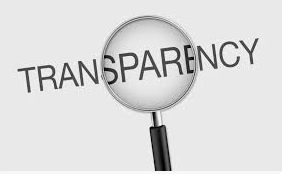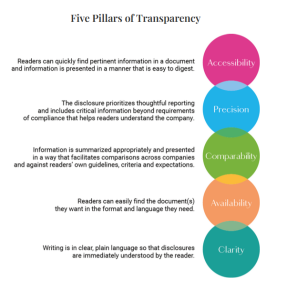As I enter my second year wearing the “Transparency Champion” hat, I’ll be endeavoring to answer the question of “why should I be pushing for better disclosure within my company?” I’ve already listed a number of reasons on our “Why Transparency” web page – including how trust enhances a company’s reputation and thus creates real business value.
It also helps retain and obtain employees. Human capital. And it also helps you to take pride in your work. Finding purpose in what you do.
But to the extent those reasons aren’t tangible enough for you – or for those you’re trying to convince – how about better outcomes with shareholder votes? Here’s an excerpt from this proxy season recap by PwC that makes that point:
“Average support for pro-E&S proposals was just 20%, down from 39% in 2021. Interestingly, support for anti-E&S proposals also trended downward to 2%, despite a record number of proposals filed. We continued to see proposals that were likely too prescriptive and specific with their requests. After similar submissions failed in 2023, we expected shareholder proponents to listen to the market and file broader policy-based proposals. They didn’t and the results were predictable. But that is not the only factor that drove the results.
The diminished support may also be due to disclosures catching up with investor expectations in this area. As companies comply with Europe’s CSRD and the California climate disclosure requirements (the SEC rules are stayed, pending legal challenges), they are reporting more sustainability data than ever before, giving investors a clearer picture of the impact of climate-related and other sustainability-related issues on the business. In many cases, this has allowed companies to proactively address investor concerns.
We saw that in several instances. For example, the same proposal focused on adopting emissions reduction targets was submitted at separate companies in the consumer cyclical and energy sectors. The proposals failed to gain meaningful support at the energy companies in part because they had fairly robust disclosures on the topic, even though the proposals were asking for additional disclosure. But there was significant support for the proposals at the consumer cyclical companies likely because of their limited disclosures.”





















